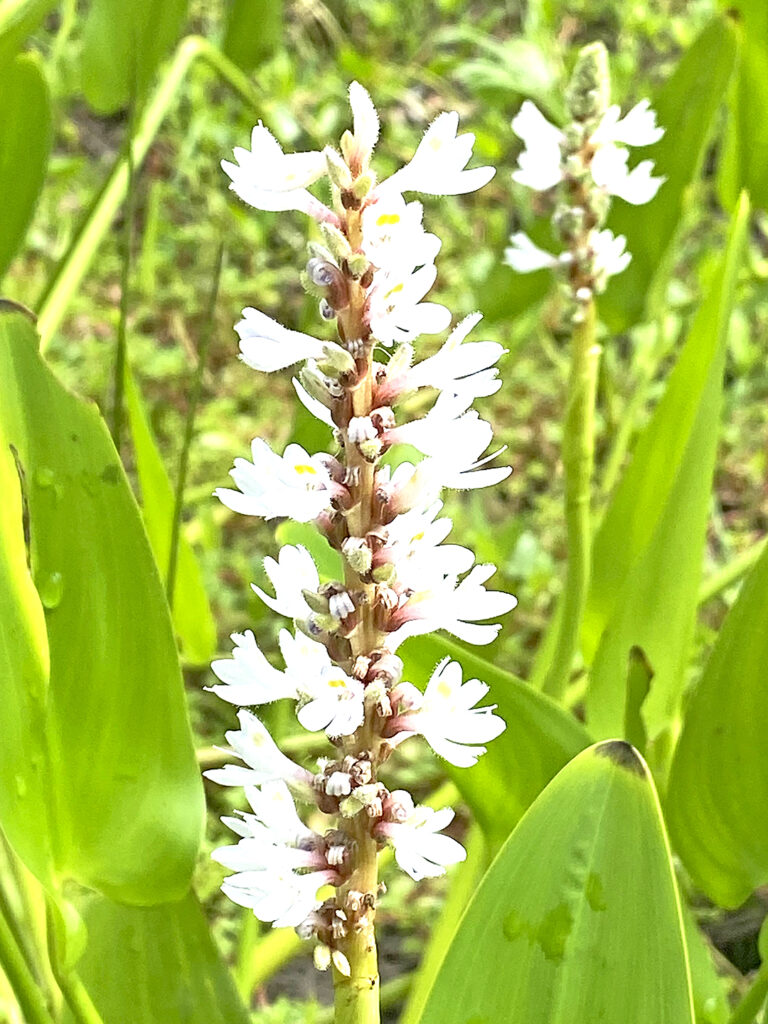Pickerelweed

By LYNN ARTZ, SANDY TEDDER and DAVID RODDENBERRY
Pickerelweed (Pontederia cordata) is a common aquatic wildflower. In summer, a showy spike of purplish-blue tubular flowers stands out above large, glossy green leaves. Sometimes the flowers are white. Butterflies and pollinating bees visit the upright flower spikes that later droop to disperse seeds. Two specialist bees feed only pickerelweed pollen to their young. Dragonflies and damselflies lay eggs on the stem that drop into the water, develop into larvae, and later crawl up the stem to become adults. This 2-3-foot perennial prefers less than a foot of water but tolerates deeper flooding. Submerged parts provide habitat for invertebrates that feed amphibians, reptiles, and fish. Individual plants are short-lived but spread underground into large colonies. White pickerelweed from the collection of Victor Lambou is flowering now in the pond at Sopchoppy Depot Park.


